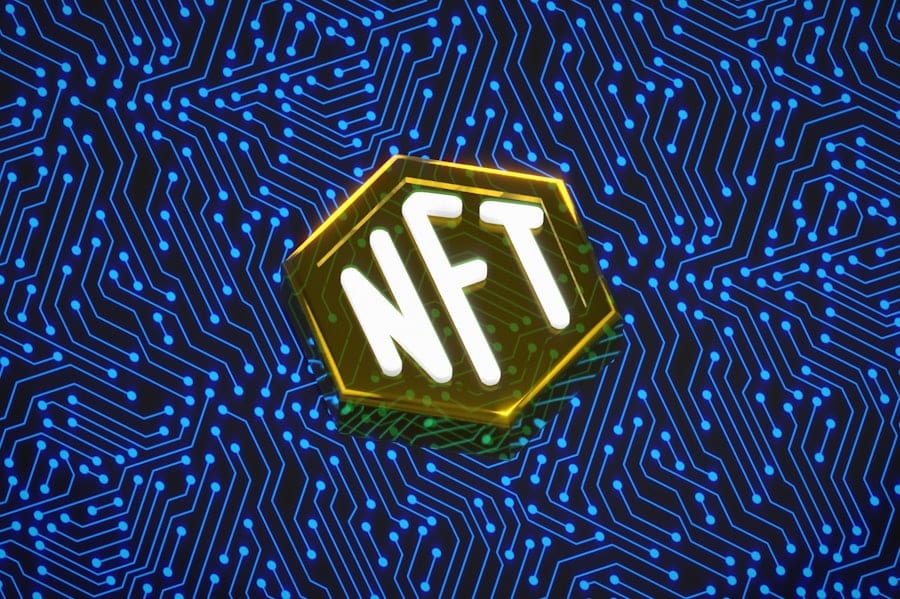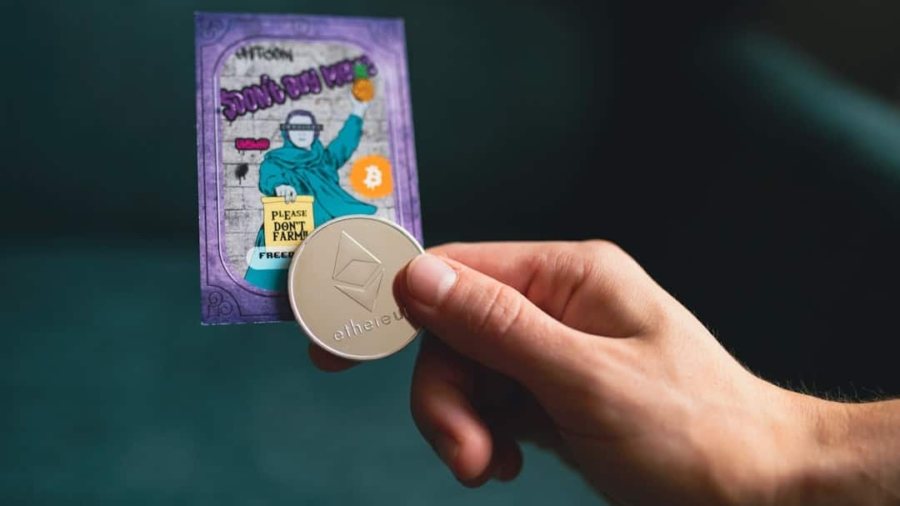Non-fungible tokens, or NFTs, have emerged as a revolutionary digital asset class that has captured the attention of artists, collectors, and investors alike. Unlike cryptocurrencies such as Bitcoin or Ethereum, which are fungible and can be exchanged on a one-to-one basis, NFTs are unique digital tokens that represent ownership of a specific item or piece of content. This uniqueness is secured through blockchain technology, which provides a transparent and immutable ledger of ownership.
The rise of NFTs has been particularly pronounced in the realms of art, music, gaming, and virtual real estate, where creators can tokenize their work and sell it directly to consumers without the need for intermediaries. The concept of NFTs gained significant traction in 2021, with high-profile sales making headlines around the world. For instance, digital artist Beeple sold a piece titled “Everydays: The First 5000 Days” for an astonishing $69 million at a Christie’s auction.
This sale not only highlighted the potential financial value of digital art but also sparked discussions about the nature of ownership and authenticity in the digital age. As more creators and brands explore the possibilities of NFTs, it becomes essential to understand their underlying technology and implications for various industries.
Key Takeaways
- NFTs are unique digital assets that represent ownership of a specific item or piece of content on the blockchain.
- NFTs can be used to build and engage communities by creating a sense of ownership and belonging among members.
- Examples of NFT community building initiatives include creating exclusive NFTs for community members, hosting NFT art exhibitions, and using NFTs for fundraising purposes.
- NFTs can be powerful tools for inclusive community engagement by providing opportunities for underrepresented voices and creators to showcase their work.
- While NFTs offer opportunities for community building, challenges such as accessibility, environmental impact, and market volatility should be carefully considered.
NFTs and Community Building: How They Connect
NFTs have the potential to serve as powerful tools for community building by fostering connections among individuals who share common interests or passions.
For instance, artists who release limited edition NFTs can create exclusive clubs for their collectors, offering them unique perks such as early access to future releases, behind-the-scenes content, or even personal interactions with the artist.
This exclusivity not only enhances the value of the NFT but also strengthens the bond between the creator and their audience. Moreover, NFTs can facilitate community engagement by providing a platform for members to express their creativity and contribute to collective projects. For example, decentralized autonomous organizations (DAOs) are emerging as a new model for community governance, where NFT holders can vote on decisions related to the direction of a project or initiative.
This democratic approach empowers community members to take an active role in shaping their environment, fostering a sense of ownership and responsibility that can lead to deeper connections among participants.
Examples of NFT Community Building Initiatives

Several innovative projects have successfully harnessed the power of NFTs to build and engage communities. One notable example is the Bored Ape Yacht Club (BAYC), a collection of 10,000 unique digital apes that serve as membership cards to an exclusive community. Owners of these NFTs gain access to various benefits, including virtual meetups, parties, and collaborations with other artists and brands.
The BAYC community has grown rapidly, with members actively participating in discussions on social media platforms like Discord and Twitter, sharing their experiences and showcasing their apes in creative ways. Another compelling initiative is the World Wildlife Fund’s (WWF) NFT project aimed at raising awareness about endangered species. By creating NFTs that represent specific animals, WWF not only generates funds for conservation efforts but also builds a community of environmentally conscious individuals who are passionate about wildlife preservation.
NFT holders receive updates on conservation projects and can participate in virtual events that connect them with experts in the field. This approach not only raises awareness but also fosters a sense of camaraderie among supporters who share a common goal.
NFTs as Tools for Inclusive Community Engagement
One of the most promising aspects of NFTs is their potential to democratize access to creative opportunities and community engagement. Traditionally, many artistic and cultural spaces have been dominated by gatekeepers who control access to resources and platforms. However, NFTs enable creators from diverse backgrounds to showcase their work directly to audiences without relying on traditional institutions.
This shift can lead to more inclusive communities where underrepresented voices are amplified. For instance, platforms like Foundation and OpenSea allow artists from various backgrounds to mint and sell their NFTs without needing extensive financial backing or industry connections. This accessibility encourages participation from marginalized groups who may have previously faced barriers in the art world.
Additionally, NFT projects that prioritize social impact often incorporate mechanisms for community members to contribute to charitable causes or support fellow creators, further enhancing inclusivity within these spaces.
Challenges and Opportunities in Using NFTs for Community Building
While the potential for NFTs to enhance community building is significant, several challenges must be addressed to fully realize this potential. One major concern is the environmental impact associated with blockchain technology, particularly proof-of-work systems that require substantial energy consumption for transactions. As awareness of climate change grows, communities utilizing NFTs must consider sustainable alternatives or offset their carbon footprints to align with their values.
Another challenge lies in the volatility of the NFT market. Prices can fluctuate dramatically based on trends and speculation, which may deter some individuals from participating in NFT communities due to financial uncertainty. To mitigate this risk, community leaders can focus on creating value beyond mere speculation by emphasizing the importance of artistic expression, collaboration, and shared experiences over monetary gain.
Despite these challenges, opportunities abound for communities willing to embrace NFTs as tools for connection and engagement. By fostering environments that prioritize creativity and collaboration over profit-driven motives, communities can cultivate lasting relationships among members while exploring innovative ways to leverage digital assets.
Leveraging NFTs to Amplify Voices and Creativity within Communities

NFTs provide a unique platform for individuals to express their creativity while amplifying their voices within their communities. Artists can create works that reflect their cultural heritage or personal experiences, allowing them to share their stories with a global audience. This democratization of art enables diverse perspectives to be represented in the digital space, enriching the cultural landscape.
Moreover, NFT platforms often encourage collaboration among creators from different disciplines. Musicians can team up with visual artists to produce multimedia projects that combine music and visual art into cohesive experiences. These collaborations not only showcase individual talents but also foster a sense of unity within communities as members come together to support one another’s creative endeavors.
NFTs and the Future of Community Building
As the landscape of digital assets continues to evolve, NFTs are poised to play an increasingly significant role in shaping community dynamics. The rise of decentralized finance (DeFi) and blockchain technology has opened new avenues for collaboration and engagement among community members. For instance, NFT-based crowdfunding initiatives allow creators to raise funds directly from their supporters while offering unique rewards in return.
Furthermore, as more organizations explore the potential of metaverse environments—virtual spaces where users can interact through avatars—NFTs will likely become integral components of these digital ecosystems. Virtual worlds like Decentraland and Cryptovoxels already incorporate NFTs as land ownership or unique items within their environments, creating opportunities for communities to gather, collaborate, and engage in shared experiences.
Tips for Using NFTs to Foster Stronger Community Connections
To effectively leverage NFTs for community building, several strategies can be employed. First and foremost, it is essential to prioritize transparency and open communication among community members. Establishing clear guidelines for participation and decision-making processes fosters trust and encourages active engagement.
Additionally, creating opportunities for collaboration can enhance connections within the community. Organizing events such as virtual art shows or collaborative projects allows members to showcase their talents while fostering relationships with one another. Encouraging feedback and input from community members can also lead to more inclusive decision-making processes that reflect the diverse perspectives within the group.
Finally, focusing on long-term value rather than short-term gains is crucial for sustaining community engagement. By emphasizing shared goals and collective growth over individual profit motives, communities can cultivate lasting relationships that thrive on creativity, collaboration, and mutual support. In conclusion, NFTs represent a transformative force in community building by providing new avenues for connection, creativity, and engagement among individuals with shared interests.
As this technology continues to evolve, it will be essential for communities to navigate challenges while embracing opportunities that foster inclusivity and collaboration in an increasingly digital world.
A related article that delves into innovative strategies for revitalizing businesses is


